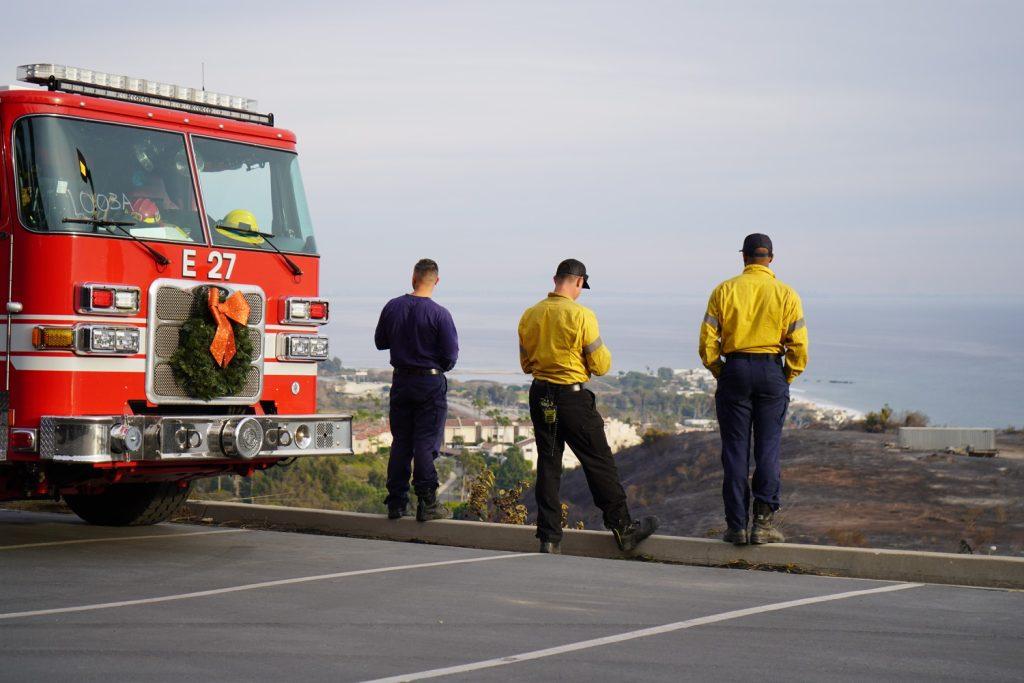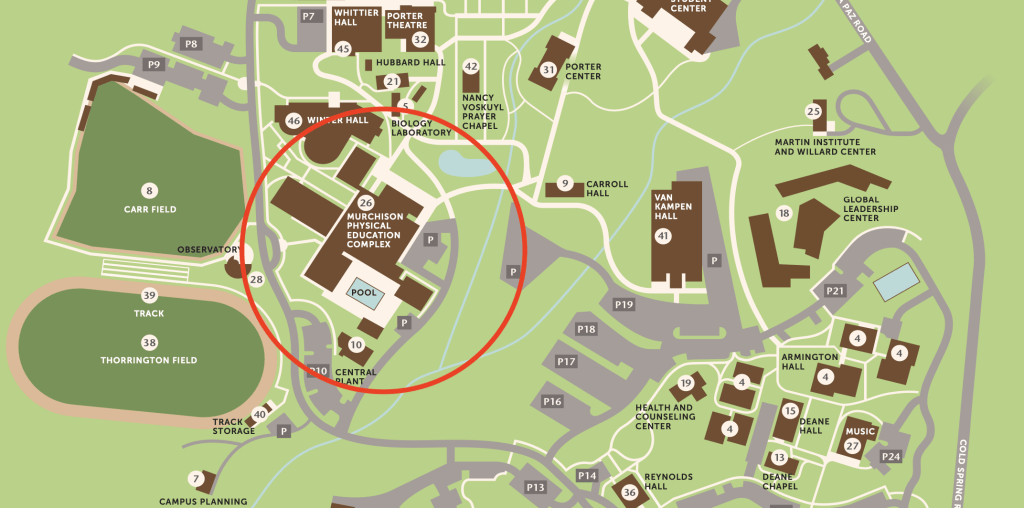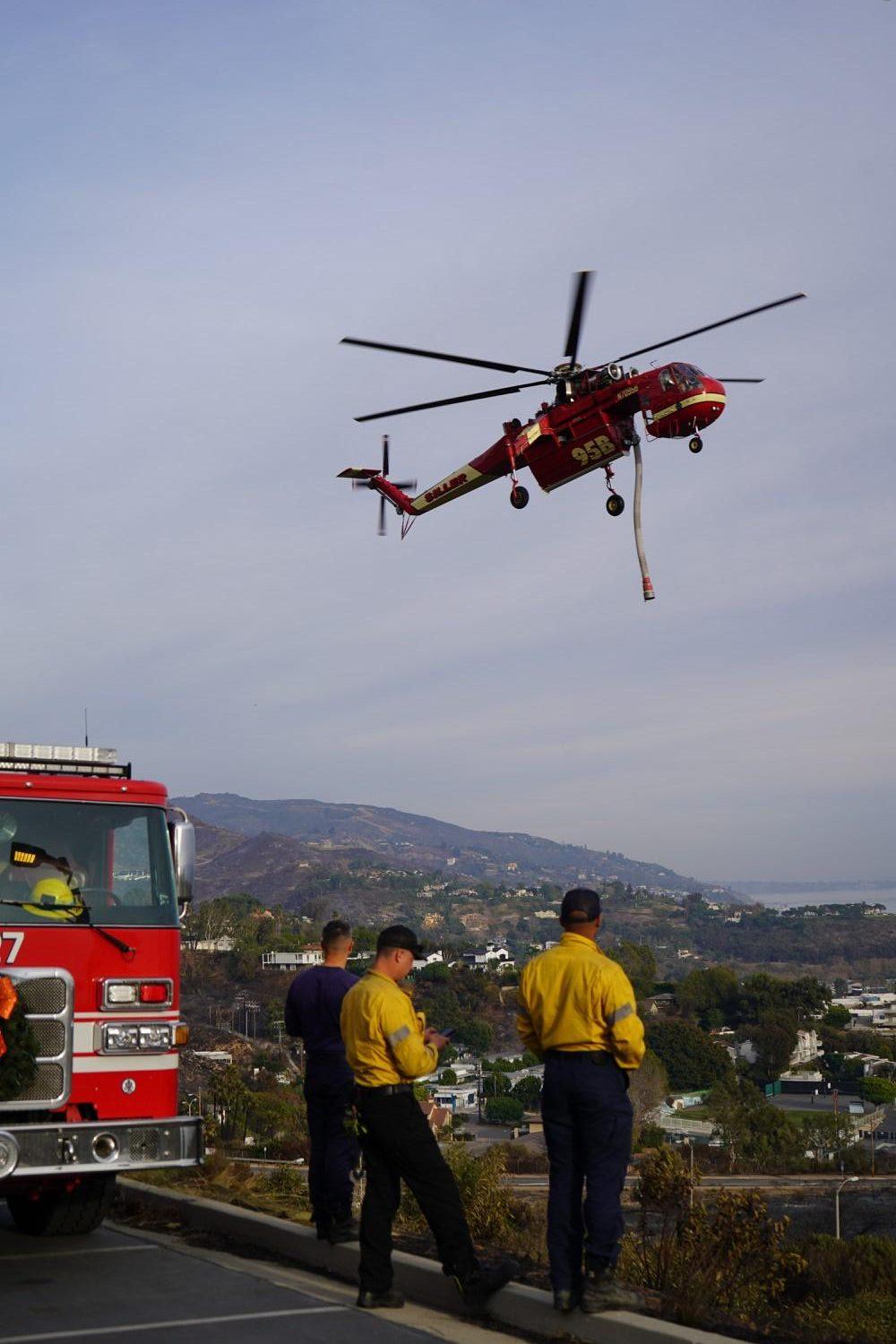
Editor’s note: This part of a reporting series, “From the Flames,” that explores the aftermath of the recent L.A. County fires. In December of 2024, the Franklin Fire ignited in Malibu, burning 4,000 acres and dozens of structures. Students and faculty sheltered in place on campus while flames burned the nearby hillsides. Then, less than a month later, the Palisades Fire exploded, burning more than 23,000 acres in Malibu and the Pacific Palisades. Today, PCH remains closed, homes remain in ruins and the local businesses that are open continue to struggle. Yet, as new growth begins to sprout on the nearby hillsides, there are small signs of recovery as communities begin the long road to recovery.
Pepperdine’s shelter-in-place protocol serves as inspiration for nearby universities.
Pepperdine’s shelter-in-place protocol received some criticism from the community following the ignition of the Franklin Fire on Dec. 9 when students sheltered in Payson Library or Tyler Campus Center while the rest of Malibu was under an evacuation warning. The L.A. County Fire Department recognizes Pepperdine as a shelter-in-place campus in the case of a wildfire. This procedure allows for students to stay on campus after relocating to a safe location until authorities say it’s safe to return to residential housing, according to Pepperdine’s Emergency Information website.
Around 6,000 people evacuated Malibu, according to ABC7. However, Pepperdine’s shelter-in-place protocol serves as inspiration for other nearby colleges, including Westmont College in Santa Barbara.
“I’d just want to really laud Pepperdine too, I know these events are really scary and Pepperdine is on the forefront of being able to handle these things,” said Jason Tavarez, Westmont College’s executive director of Institutional Resilience. “They do a lot of risk mitigation when it comes to wildfires.”
Westmont College Adopts a Shelter-in-Place Protocol
Westmont College in Santa Barbara became a shelter-in-place facility in 2005-2006, Tavarez said. Westmont became interested in considering a shelter-in-place protocol when the Australian wildfire plan gained popularity and the University took a closer look at where its campus is nestled in the hills of Montecito.
This initiated a conversation between Westmont and the county office of emergency management as well as the local fire department that then moved them closer to becoming a shelter-in-place facility, Tavarez said.
Once they created a shelter-in-place plan and decided on a location — the gym — they incorporated tools, such as an exhaust fan to circulate air out of the building when smoke is present, as well as storage areas for emergency supplies to have on hand, Tavarez said

Westmont keeps enough supplies in the form of food, water and electrical toilets to sustain their campus in case of an emergency for three days, which is a recommendation of the Federal Emergency Management Agency, Tavarez said.
The most devastating fire Westmont has experienced to date was the 2008 Tea Fire. The fire burned nearly 14 campus buildings and activated the college’s shelter-in-place protocol, Tavarez said.
The fire ignited during a cookout that quickly got out of hand in the tea gardens which then rapidly spread down into Westmont’s campus, Tavarez said.
“There was literally no time for us to get students off campus even if we wanted to,” Tavarez said. “It went from up there to our campus in less than a half an hour.”
The students were sheltered in place for one evening and despite the structural loss, Tavarez said it was a success.
“As much as a fire can be a success, that was a success for us,” Tavarez said. “Because nobody got hurt, nobody was left in the path of danger.”
Tavarez said Pepperdine has served as inspiration for Westmont’s shelter-in-place protocol, especially since Westmont is also a Christian college.
“Pepperdine is really considered in many ways the gold standard for fire safety and keeping students safe,” Tavarez said.
Pepperdine’s Shelter-in-Place Campus
The open space Pepperdine’s campus inhabits in the Santa Monica Mountains is the only one of its kind, Drew Smith, the assistant fire chief for the L.A. County Fire Department, said. This space is essentially what keeps its residents safe during wildfires. If the Franklin Fire did not happen, the 80 to 100 mile per hour winds during the Palisades fires would not have forced a full evacuation of the campus.
“For you to get overrun by a fire on this campus, if you follow the rules, you do what we train to do, that has a very remote chance of that happening,” Smith said.

During the fires, the Lost Hills Sheriff’s station and Pepperdine were in constant communication, Smith said. However, there was confusion at times within their department on whether or not Pepperdine was supposed to evacuate when the evacuation order was put in place.
“But we right-sided the ship really quick on ‘no they’re a shelter in place,’” Smith said.
Smith said he meets with University officials annually to go over the fire systems put in place to see how they can be improved to better serve the community.
“We went around for two hours today, looking at best practices,” Smith said March 19.
Pepperdine’s After Action Plan
Jonathan Weber, director of Emergency Services, said he meets with the fire chief during their annual meeting and Weber said Smith continues to instruct the University to shelter-in-place.
One of Weber’s jobs entails writing up an after-action plan following an emergency event such as a wildfire that impacts the campus, he said. In this plan, he details what went well and what could be improved upon. Following the Franklin and the Palisades fires, that list was 100 items long, Weber said.
“Now these are not major changes to the plan, they are all minor tweaks,” Weber said.
The plans focus on improving communications with students and with parents. The University is in contact with cell carriers to look at how signals can be improved by closing coverage gaps and getting emergency power connected permanently, Weber said.
The University is also looking to add additional radios for the Housing and Residential Life staff that would be powered through the generators.
Westmont’s Shelter-in-Place Communication
Westmont equips every resident director (RD) with a backup radio in case of power outages in an emergency, Tavarez said. The college also trains RDs on how to use different radio channels so they can switch back and forth.
All of the residential assistants at Westmont are trained during a wildfire drill. During the drill, they are assigned to-go bags and instructed to go to the gym and unlock the supply cabinets the college has on hand.
“They start putting up the signs, they start taping up the doors to make sure smoke doesn’t come in and they get used to where everything is in there,” Tavarez said.
The college has also created a partnership with local cell carriers who have leased space on Westmont’s taller campus buildings for cell towers to improve service.
Shelter-in-Place for Malibu
The Malibu City Council discussed the potential of implementing shelter-in-place protocols for the city at recent council meetings, but Smith said this is not a possibility for the city. The city’s landscaping provides a barrier since it’s condensed.
“But we wouldn’t make any other places a shelter in place, otherwise we would have identified them,” Smith said.

During the Broad Fire in November, the flames burned into the neighborhood below, taking out three to four structures, Smith said. Even with the park, there still wasn’t enough space to contain the fire.
Smith said 5,000 people could stand safely on Alumni Park during a wildfire because of the space and the fire protection.
“That is the ultimate win,” Smith said.
____________________
Follow the Graphic on X: @PeppGraphic
Contact Rachel Flynn via email: rachel.flynn@pepperdine.edu

